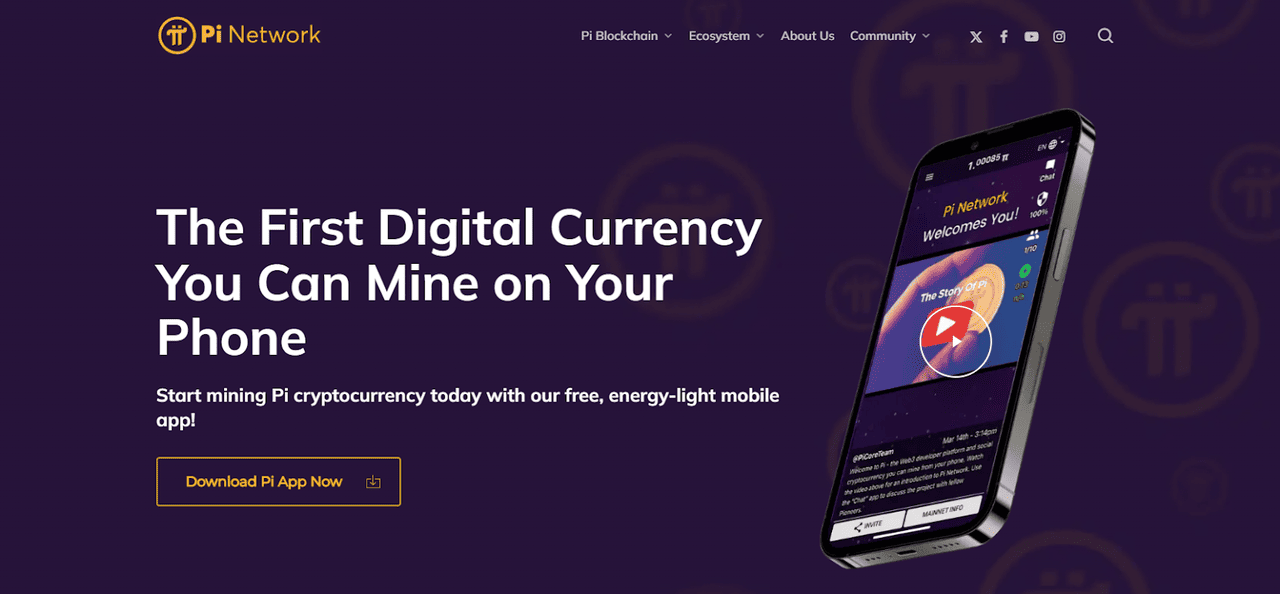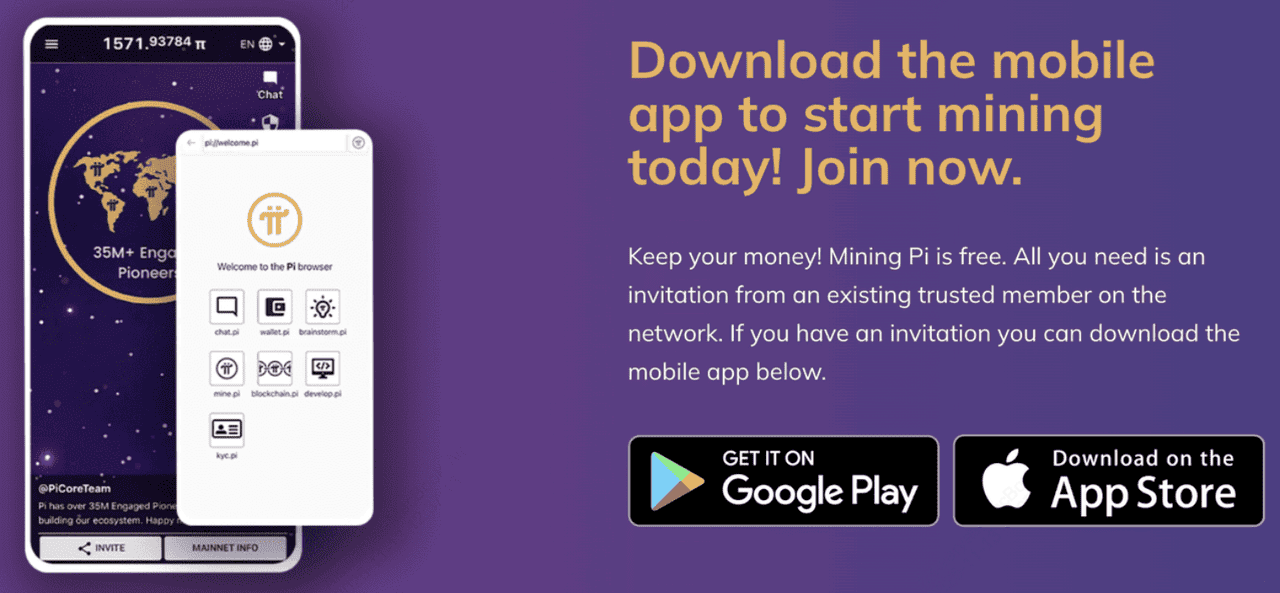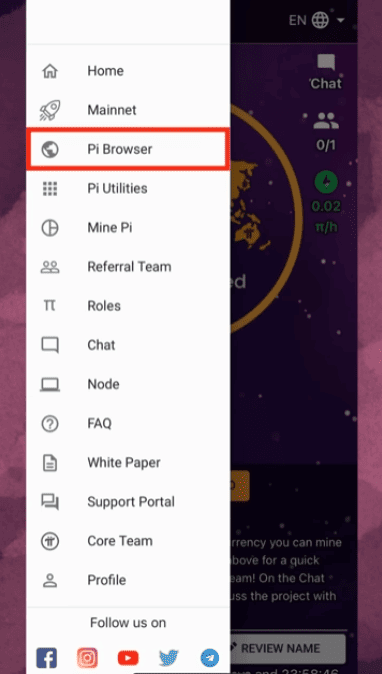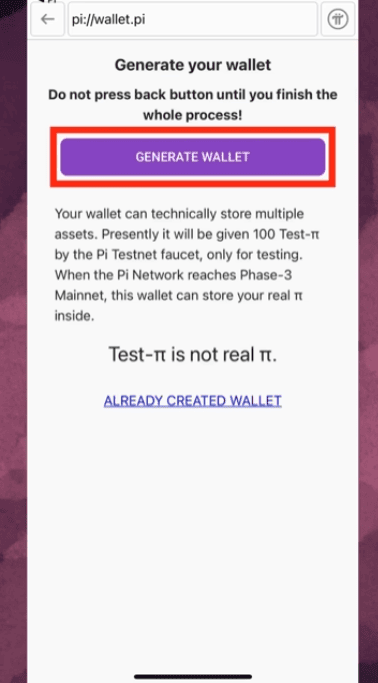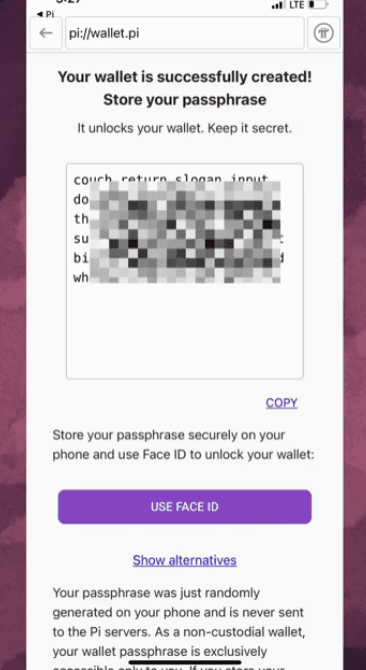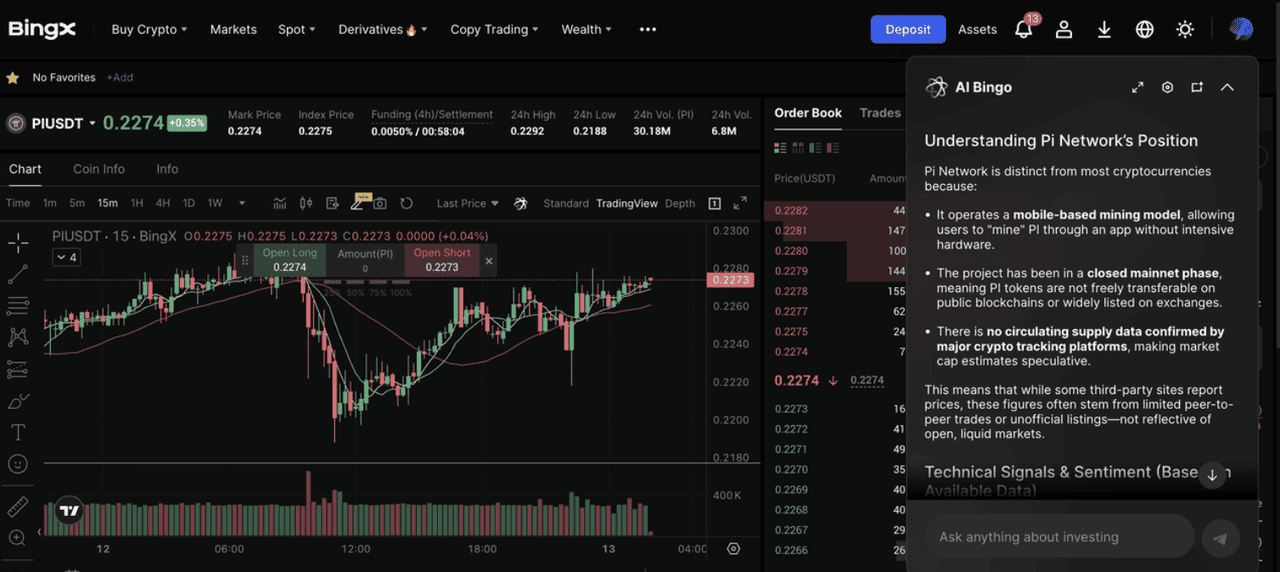From the initial alpha mobile app release in December 2018 to the start of the
Mainnet-enclosed period in December 2021,
Pi Network has progressed to enable full connectivity and external transactions within its Open Network era. The Pi Wallet is a
non-custodial wallet that stands out as the official digital wallet for the Pi Network, offering advanced cryptographic security and usability.
Pi's mobile wallet allows users to securely store and manage their Pi coins, including direct access to marketplace purchases using Pi for goods and services from community members. A new groundbreaking era has begun for Pioneers. Users can engage in transactions beyond the Pi ecosystem, connect with KYB-verified businesses, and access new integrations like centralized exchanges. Pi Network has rapidly expanded its community to more than 100 million app downloads and over 19 million verified users worldwide.
What Is Pi ($PI) Coin and What Is the Pi Network Wallet?
Pi (PI) is the native cryptocurrency of the Pi Network, a blockchain designed to make crypto mining accessible to anyone via mobile devices. Officially launched with the Pi Open Mainnet on February 20, 2025, it introduced external connectivity, allowing users to trade, transfer, and use PI tokens outside the enclosed ecosystem. At launch, over 100 mainnet apps were live, supporting payments, dApps, and marketplace interactions.
The Pi Wallet is a non-custodial mobile wallet built into the Pi Browser, giving users full control to store, send, and receive PI coins securely. As of PiFest 2025, more than 58,000 merchants and 125,000 sellers worldwide accept PI for goods and services, reflecting growing real-world adoption.
Beyond payments, Pi Network Ventures’ investment in OpenMind connects Pi’s infrastructure with AI and robotics, enabling Node operators to earn PI by contributing computing power for AI tasks. This expands Pi’s role beyond digital payments, positioning it as a bridge between decentralized computing, blockchain, and the emerging AI economy.
What are the Key Features of Pi Wallet?
Source: MinePi
The Pi Wallet offers self-custodial security. This means that your private keys are never stored on Pi Network servers. Security is further enhanced with biometric authentication, such as fingerprint or facial recognition. This is revolutionary because even if someone gains physical access to your device, they cannot access your Pi tokens without your unique biometric data. The wallet's setup is user-friendly, with clear, guided steps included directly within the Pi Network app.
One key feature that makes Pi Network stand out is the Pi Mining App. The Pi Mining App remains the heart of the Pi ecosystem, with over 70 million registered users and 14.8 million verified Mainnet accounts as of late 2025. This app allows users to
mine PI coins for free on your mobile device. This results in a fairer, more distributed cryptocurrency, available to people worldwide. Pi Network also integrates a Know Your Customer (
KYC) verification process, powered by its crowd-scaled KYC solution and proprietary, energy-light mining technology. This allows users to migrate their mined Pi tokens to the mainnet while maintaining compliance and network legitimacy.
With more than 60 million engaged members worldwide and an open, accessible community driven by utility-focused Web3 innovations, Pi Network empowers people everywhere to mine cryptocurrency freely on mobile, promoting fairness and decentralized wealth distribution. Supported by a global team of over 35 experts spanning across Silicon Valley, the U.S., Europe, and Asia, Pi continues to deliver revolutionary tech and build a robust ecosystem where secure and accessible financial tools are available to all.
Who Created Pi Wallet?
Pi Wallet was developed by the core Pi Network team, led by Stanford PhDs Dr. Nicolas Kokkalis and Dr. Chengdiao Fan. They started with the mission to make cryptocurrency inclusive and intuitive for everyone. Their efforts focus on lowering barriers to blockchain participation by leveraging Pi Network's unique consensus algorithm, which uses individual security circles and constructs a global trust graph to facilitate secure transactions without intermediaries.
The transition to Open Network removes the firewall of the previous Enclosed Network period, allowing external connectivity to other networks, wallets, and anyone who wants to connect to Pi Mainnet. This approach ensures that everyone who contributes to the network's security can capture a share of the value created, reinforcing Pi's commitment to community growth and open accessibility.
How to Set Up a Pi Wallet: Step by Step Guide
Source: Pi Network
Step 1: Download the Pi Browser app from the official app store.
Step 2: Open the Pi Network mining app and click on the side menu, represented by the ☰ icon.
Step 3: Select the option labeled “Pi Browser” from the menu.
Step 4: Click on “sign in to Pi Browser” to continue.
Step 5: Click on the “wallet.pi” option in the Pi Browser.
Step 6: Click on “Generate Wallet” to create your new wallet.
Step 7: Write down your Seed Phrase and securely store it in a location where you can access it when needed. Important: Your Seed Phrase is the only way to recover your wallet if your data is deleted from the app.
Step 8: Fund your wallet with BingX and get in on the action by Trading PI on BingX Futures. You can now send, receive, and store Pi coins directly in your wallet.
Following these steps connects you to the core infrastructure of Pi's Web3 ecosystem, from identity and wallet creation to real DeFi testing and app monetization, positioning you to grow with the network as it transitions to Open Mainnet.
What Sets Pi Network Apart From Other Layer-1 Blockchains?
Pi Network (PI) stands out among
Layer-1 blockchains for its focus on mobile accessibility and inclusive mining. Unlike proof-of-work networks that demand expensive hardware and high energy usage, Pi allows users to mine directly from their smartphones using the Pi mining app, consuming minimal power and bandwidth. This approach has enabled over 100 million app downloads and created one of the largest crypto user communities globally.
Technically, Pi Network replaces energy-based security with a trust-graph consensus model, where users form security circles that validate transactions based on real social connections rather than computational strength. Its phased rollout, from Testnet to Enclosed Mainnet and eventually the Pi Open Network, emphasizes identity verification (KYC), wallet custody, and developer integration before introducing open trading, dApps, and decentralized finance tools. This user-first, low-energy model differentiates Pi from traditional L1s such as Bitcoin, Solana, or Ethereum.
What Is the Pi Coin Tokenomics?
Source: 99 Bitcoins
Pi follows an accessible, community-driven tokenomics model with a hard cap of 100 billion PI.
- 45% is allocated to community mining rewards through the Pi app.
- 20% is reserved for the core team, subject to long-term vesting.
- 10% supports foundation reserves for ecosystem development.
- 5% is set aside for liquidity and market making.
Unlike traditional mining, users earn Pi by tapping the app once per day, promoting engagement rather than resource competition. With over 18 million verified users already on the Pi Open Network, this model fosters gradual decentralization while maintaining accessibility and long-term sustainability.
How to Trade PI Coin on BingX Futures
PI/USDT perpetual contract on the futures market powered by BingX AI
You can take advantage of BingX Futures to profit from market volatility in both bullish and bearish conditions. BingX supports USDT-M perpetual contracts, meaning you can
trade PI/USDT with leverage while benefiting from BingX's low fees and built-in AI analysis tools.
Here's how to long or short PI on the futures market:
1. Log in or register on BingX.com and complete identity verification (KYC) to unlock full trading access.
2.
Deposit USDT via crypto or bank transfer and navigate to the
Futures → USDT-M Perpetual Futures tab.
3. In the search bar, type
PI/USDT to open the Pi perpetual contract chart.
4. Use
BingX AI by clicking the AI icon on the chart; it automatically displays real-time sentiment, volatility ranges, and support/resistance levels for PI.
5. Choose your leverage from 1x - 20x and select a Long (Buy) order if you expect PI to rise, or a Short (Sell) order if you expect a decline.
7. Monitor your open position under “Positions” and close it anytime to realize gains or limit losses.
Conclusion
Pi Wallet is the official, non-custodial wallet for the Pi Network, allowing users to securely store, send, and receive PI coins with full ownership of their private keys. Built by the Pi Core Team led by Stanford PhDs, it offers a simple, mobile-first setup through the Pi Browser and supports millions of users worldwide. With the transition to the Pi Open Network, the wallet now enables interactions with external apps, merchants, and wallets, unlocking broader real-world use cases for PI. Continuous upgrades, such as improved Node software, strengthen network security and reward reliability.
Risk Reminder: While the Pi Wallet is secure and decentralized, users are solely responsible for safeguarding their private keys and verifying official sources to
avoid phishing or scams, especially during the early stages of mainnet expansion.
Related Reading

